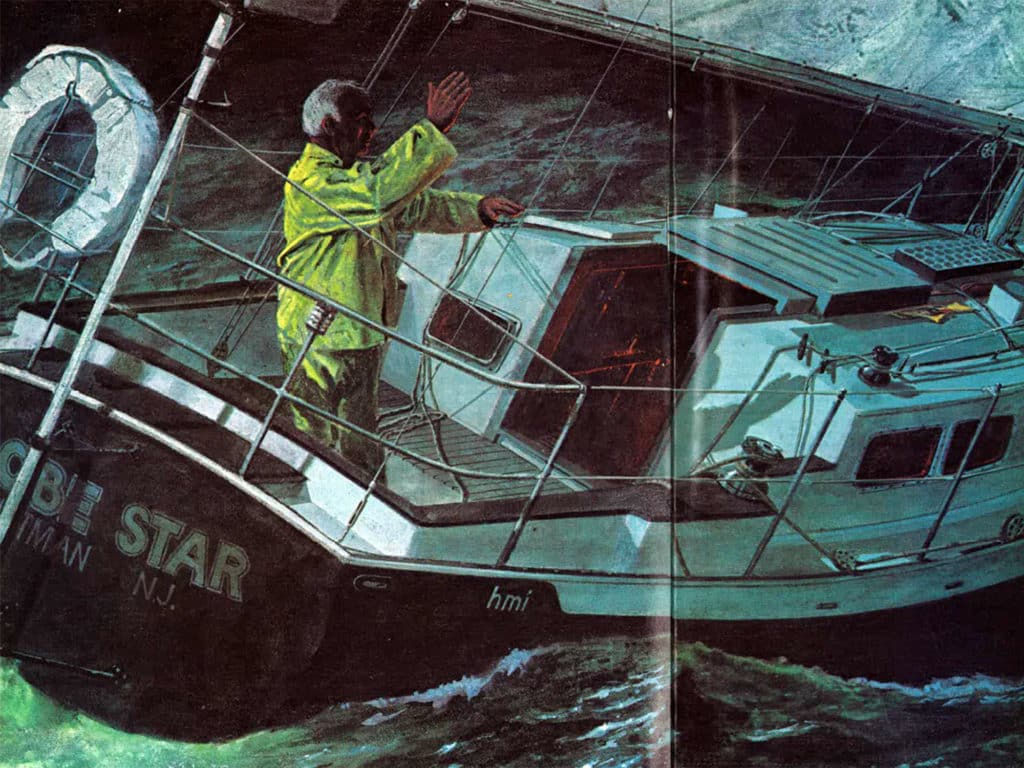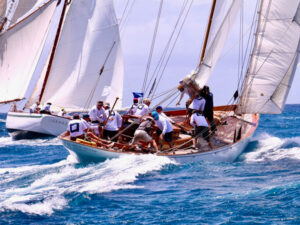
For many modern sailors, the thought of making a short coastal hop without the aid of a chartplotter or even just a handheld GPS is crazy. How about a longer journey through fog or shipping lanes without the electronic eyes of AIS or radar? Now take it one step further and imagine a journey without any navigational aids—no sextant, no compass, not even a wristwatch—and you begin to grasp Marvin Creamer’s accomplishment. In 1984, Creamer completed a circumnavigation via the Southern Ocean aboard his 36-foot cutter Globe Star without any navigational instruments. Creamer, who in addition to being a skilled mariner was also a longtime professor of geography at Glassboro State College, now Rowan University, in Glassboro, N.J., died at 104 on August 12, 2020. His adventure was chronicled in the pages of Cruising World.
When Creamer and his two crew left Cape May, N.J., on December 21, 1982, bound for Cape Town on Leg 1 of their circumnavigation, it was with some apprehension. Although Creamer had been preparing for this adventure for decade—starting with a fascination with navigating by stars during his boyhood, then through his professional life as a geographer and on to several instrument-less voyages—this journey was on a brand-new boat with crew who were not experienced with no-instrument navigation.
“As sails were hoisted I was not thinking of the circumnavigation or even of the long sail to Cape Town,” Creamer wrote in “Incredible Journey” (Cruising World, May 1984). “Instead, I was concerned with getting safely through the first night and beating foul weather to the Gulf Stream. I could only speculate on what might be going through the minds of my crew. Both were knowledgeable sailors, but neither had any experience sailing without instruments.” The going was slow, however, and the journey to Cape Town ended up taking 100 days, punctuated by Saharan dust, fog, St. Elmo’s Fire, and a South Atlantic Ocean that was completely devoid of ships or other hints of mankind.
Upon leaving on the next leg of the journey, from Cape Town to Hobart, Tasmania, Creamer and crew had received warnings about making a winter passage across the Southern Indian Ocean, but Creamer was confident in his decision and boat. It was a journey filled gales, navigational challenges and a knockdown, but was ultimately successful when they reached Tasmania some two and a half months later. “Two months into the voyage, as we approached Tasmania, our longitude—always the less certain element in no-instrument navigation—became an object of real doubt, largely because we could not know with certainty how much surface current we had experienced since leaving Cape Town,” Creamer wrote in “A Star to Steer Her By” (Cruising World, September 1984).
To navigate, Creamer used his deep knowledge of geography and oceanography, and would find his position not just from the stars, but also wave patterns, currents, water temperature and color, and even bird sightings. “To find latitude, I checked the nearness of specific stars to the boat’s zenith (the point in the sky directly overhead) and used the sun, moon, planets, stars, clouds and the wind for finding and maintaining direction,” Creamer wrote. “Because a knowledge of longitude is dependent upon correct time, longitude must be deduced from the distance covered in a specific direction. Without a recording log, time-piece, pelorus, or compass, it is necessary to estimate the speed the boat maintains for an approximate period of time in a presumed direction. Occasionally, longitude can be checked against water color, bird species, seaweed and outcrops of rock, but in general DR longitude cannot be trusted, so I relied heavily on parallel sailing, a technique that was widely used before the invention of the chronometer.”
The “jolly romp,” as Creamer liked to call it, around the world continued from Hobart and was punctuated by a capsize in the Tasman Sea, extra stops in Sydney, Australia, and Whangaroa Harbour, New Zealand, before setting off across the South Pacific, around Cape Horn to the Falkland Islands and then back home. Globe Star arrived in Cape May, on May 17, 1984, and Marvin Creamer is noted to be the only sailor in modern times to have circumnavigated without any navigational tools.
Creamer continued sailing well into his 90s from his home in North Carolina. In a time where everything seems to be connected to a screen somehow, the story of Creamer and his unusual journey is refreshing. In an interview last year with Raleigh-based Walter magazine, Creamer recounts, “I’ve lived a life of adventure. It’s a good feeling to know I was able to carry out one of my dreams.”








